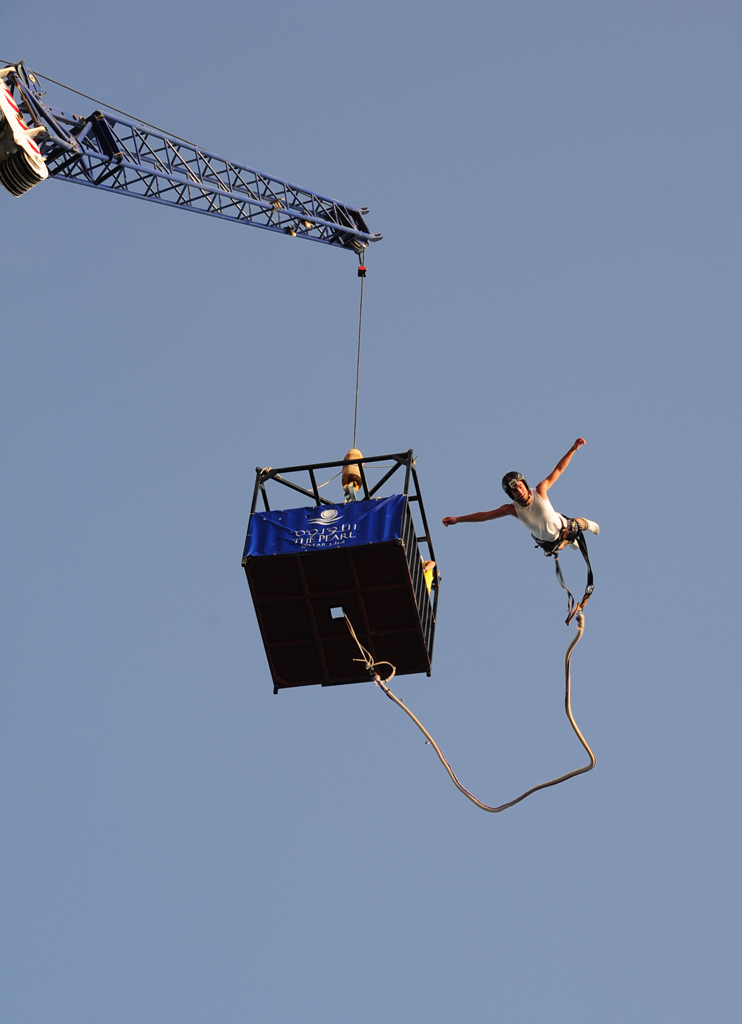Understanding Bungee Jumping Safety
Overview of Bungee Jumping – What is bungee jumping and how is it typically conducted?
Imagine standing on the precipice of the sky, your heart pounding as the wind whispers tales of daring adventurers who have leapt into the abyss. Bungee jumping, a sport that transforms adrenaline into an art form, has captivated thrill-seekers across the globe. Yet, beneath its exhilarating veneer lies a question that shadows every leap: what is the bungee jumping death rate? This statistic, often cloaked in myth and misconception, reveals that while the activity is inherently risky, it is remarkably safe when conducted under strict safety protocols. Modern bungee cords, harness systems, and expert oversight have drastically minimized the dangers associated with this sport. To truly understand the safety of bungee jumping, one must appreciate the rigorous standards and meticulous planning that underpin each jump. It’s a dance of precision—where every detail matters, and the thrill is balanced by an unwavering commitment to safety.
Typically, the process involves a harness securely fastened around the jumper, attached to a bungee cord calibrated for weight and height. The jump site itself is carefully selected and engineered, often in breathtaking natural settings, to ensure structural integrity and safety. The entire experience is orchestrated by trained professionals who monitor every aspect of the operation. When examining the bungee jumping death rate, it becomes evident that accidents are exceedingly rare—thanks to decades of technological advancements and industry standards. Nonetheless, understanding the risks involved helps enthusiasts appreciate the importance of choosing reputable operators and adhering to safety guidelines. After all, the thrill of the leap is only as safe as the safety measures that support it.
Safety Measures and Regulations – Standard safety protocols and industry regulations
When it comes to bungee jumping safety, the industry has taken a page from the most meticulous safety manuals—think of it as a ballet of precision and protocol, where every step is choreographed to prevent catastrophe. Despite the nerve-wracking thrill, the bungee jumping death rate remains astonishingly low, thanks to rigorous safety measures that would make even the most skeptical safety inspector nod in approval.
Regulations are not just suggestions; they are the backbone of the sport’s safety framework. Operating companies are required to adhere to strict standards, including regular equipment inspections, certified harnesses, and professionally trained staff. This adherence creates a safety net as reliable as the cord itself.
For example, reputable operators often follow a series of safety protocols, such as:
- Daily equipment checks
- Proper harness fitting and testing
- Weather assessments before each jump
All these layers of precaution help keep the bungee jumping death rate remarkably minimal, ensuring that adrenaline junkies can leap with confidence — and a little bit of daring bravado, of course.
Equipment and Technology – Safety gear, harnesses, and technological advancements
In the realm of extreme sports, few experiences evoke a sense of liberation quite like bungee jumping. Yet, amid the exhilaration lies a crucial focus: safety. Central to maintaining the remarkably low bungee jumping death rate are advancements in safety equipment and technology, transforming a daring feat into a meticulously engineered activity. Every harness and cord is subjected to rigorous testing, embodying a blend of craftsmanship and innovation.
Modern safety gear has evolved beyond simple ropes and harnesses. Today’s bungee cords are crafted from high-tensile materials that stretch and rebound with precision, absorbing shock and minimizing risk. Harnesses are now designed with multiple points of security, ensuring that even in unforeseen circumstances, the jumper remains safely attached. Technological breakthroughs, such as real-time load sensors and digital monitoring systems, allow operators to oversee each jump with unparalleled accuracy.
For instance, reputable operators often utilize:
- Advanced harness systems with redundant safety features
- Shock-absorbing bungee cords tested under controlled conditions
- Monitoring devices that track tension and wear levels in real time
These innovations are the backbone of a sport that balances thrill with safety, helping keep the bungee jumping death rate impressively minimal and ensuring that adventurers leap into the sky with confidence—and a dash of daring bravado.
Analyzing Bungee Jumping Accident Statistics
Historical Data on Incidents – Documented accidents and fatalities over the years
Examining the historical data on bungee jumping incidents reveals a startling reality—while the activity is often portrayed as an adrenaline-fueled thrill, the bungee jumping death rate remains remarkably low. Over the past few decades, documented accidents and fatalities have been meticulously recorded, painting a picture that balances risk with resilience. It’s a testament to the rigorous safety standards and technological advancements that continue to evolve, ensuring that each leap is met with precision and caution.
Across the globe, the statistical landscape of bungee jumping safety underscores a nuanced truth: fatalities are rare, yet not nonexistent. An analysis of incident reports shows that most accidents are linked to human error, equipment failure, or unforeseen environmental factors. For instance, in the United Kingdom, where safety regulations are stringently enforced, the bungee jumping death rate hovers at an almost negligible level—less than one death per million jumps. Such data offers a sobering perspective on the inherent dangers of this sport and the importance of continual vigilance.
In understanding these figures, it is crucial to contextualize them within the broader scope of risk-taking pursuits. The allure of defying gravity and confronting mortality is deeply rooted in human nature. Yet, the historical record suggests that, with proper safeguards, the bungee jumping death rate can be kept to a minimum, allowing thrill-seekers to chase their adrenaline rush with confidence and caution. The numbers serve as both a warning and a reassurance—reminding us that while danger is inherent, it can be managed, and lives can be preserved through diligent adherence to safety protocols.
Sources of Data – Where the statistics are compiled from, including safety boards and organizations
Accurate data on the bungee jumping death rate is essential for understanding the true safety of this extreme sport. Sources of accident statistics are carefully compiled from multiple channels, ensuring a comprehensive view of risks involved. National safety boards and independent organizations play a pivotal role in collecting and verifying incident reports. These data repositories track every reported mishap, whether minor or fatal, providing transparency and accountability.
In the United Kingdom, for example, organizations like the British Safety Council and the Bungee Jumping Association maintain detailed incident logs. These sources reveal that fatalities are exceedingly rare, emphasizing the effectiveness of strict safety standards. To get a clearer picture, data often comes from:
- Official safety agencies
- Accident and incident reports
- Independent safety audits
- Media coverage of notable accidents
Such diverse sources help paint an accurate picture of the bungee jumping death rate, highlighting both progress and areas for continued vigilance. These figures underscore the importance of rigorous safety protocols and technological innovations in maintaining low mortality rates in the UK’s booming adventure tourism industry.
Limitations of Data – Challenges in collecting comprehensive accident data
While the bungee jumping death rate remains remarkably low, understanding the true safety of this exhilarating sport is complicated by the limitations inherent in accident data collection. Many incidents go unreported, especially minor mishaps or near-misses, which are often seen as less newsworthy but are crucial in painting a full picture of risk. This underreporting can skew perceptions, making the sport seem safer than it actually is.

Challenges in gathering comprehensive accident statistics include inconsistent reporting standards across different regions and organizations. Sometimes, incidents are logged differently depending on whether they happen at a licensed facility or an unofficial jump site. To address these discrepancies, some experts recommend a standardized approach, but such efforts are still underway. Accurate data is vital for maintaining public trust and ensuring safety protocols continue to evolve effectively.
Furthermore, the bungee jumping death rate may appear lower due to technological advancements and stricter safety regulations—yet, without complete data, it’s impossible to measure the true extent of risk accurately. The following factors illustrate some of the hurdles faced in accident data collection:
- Underreporting of minor incidents
- Variability in safety standards across locations
- Delayed or incomplete incident documentation
Bungee Jumping Death Rate Compared to Other Extreme Sports
Comparison with Skydiving – Death rates and safety records
When comparing extreme sports, the bungee jumping death rate is often perceived as alarmingly high, but reality paints a different picture. Statistically, bungee jumping boasts a remarkably low death rate, especially when contrasted with skydiving. While both activities are exhilarating, skydiving’s death rate tends to hover around 0.006 fatalities per 1,000 jumps, according to safety records from reputable organizations. In contrast, the bungee jumping death rate is approximately 1 in 500,000 jumps, making it significantly safer than many assume.
Despite its reputation for danger, bungee jumping’s rigorous safety measures and technological advances have contributed to its safety record. The industry’s strict safety protocols and high-quality equipment help keep the death rate minimal. For enthusiasts seeking adrenaline, understanding these statistics offers reassurance. The difference in safety profiles illustrates that with proper regulation, bungee jumping remains one of the safer extreme sports, especially when compared to skydiving’s higher risk profile.
Comparison with Rock Climbing and Paragliding – Risk assessments across extreme sports
In the realm of adrenaline-fueled pursuits, few activities evoke such a visceral thrill as bungee jumping. Yet, when contemplating the peril it embodies, the bungee jumping death rate reveals a startling truth: it is remarkably low, especially when set against the jagged tapestry of other extreme sports. Unlike the icy grip of risk often imagined, statistics whisper a more reassuring tale—one of technological mastery and rigorous safety protocols.
Compared to rock climbing, which, despite its strategic allure, carries an estimated fatality rate of around 1 in 2,000, the bungee jumping death rate stands as a testament to safety excellence. Similarly, paragliding, with its poetic dance across the sky, reports a death rate of approximately 1 in 11,000. Such figures, though seemingly distant, underscore how well-regulated and technologically advanced bungee jumping has become.
- Safety measures and technological innovations continually elevate the safety profile, ensuring that the thrill remains tethered to caution.
In essence, the comparison of risk across extreme sports illuminates a truth often overshadowed by myth—bungee jumping, when executed under disciplined regulation, is among the safest, offering an exhilarating experience without surrendering to reckless danger. The bungee jumping death rate, enshrined in meticulous data, affirms that adventure and safety can indeed coexist, crafting a symphony of adrenaline and assurance.
What Makes Bungee Jumping Unique – Factors contributing to its safety profile
When weighing the peril of extreme sports, the bungee jumping death rate often defies expectations. Despite its reputation for heart-pounding excitement, statistics reveal that bungee jumping is among the safest adrenaline pursuits. This is particularly striking when compared to the more perilous activities like rock climbing or paragliding. The safety record of bungee jumping speaks volumes about the industry’s commitment to safeguarding thrill-seekers while maintaining high standards of technological innovation.
What makes bungee jumping unique, and perhaps even admirable, is its rigorous safety profile—crafted by meticulous equipment standards and strict regulatory oversight. Unlike certain extreme sports where danger seems woven into the fabric of the activity, bungee jumping benefits from modern harness technology, redundant safety measures, and highly trained operators. These factors have contributed to a consistently low bungee jumping death rate, which remains remarkably low even over decades of operation.
- Advanced harness systems that distribute force evenly
- Regular safety inspections mandated by industry regulations
- Comprehensive operator training programs
- Use of cutting-edge materials that withstand extreme stress
Such measures underscore why the bungee jumping death rate is notably lower than that of activities like skydiving or rock climbing. This unique blend of technological mastery and regulatory discipline makes bungee jumping a calculated risk—exhilarating yet reassuringly safe. It’s a testament to how innovation and vigilance can elevate extreme sports into realms of both adventure and assurance, ensuring thrill and safety walk hand in hand.
Factors Affecting Bungee Jumping Safety and Death Rate
Location and Operator Experience – Impact of jumping sites and operator expertise
One of the most critical factors influencing the bungee jumping death rate is the location of the jump itself. Not all sites are created equal—some sites are nestled in remote, rugged landscapes where unpredictable weather and challenging terrain can compromise safety. Conversely, well-established, city-based sites often have rigorous safety protocols and advanced infrastructure that significantly reduce risks. The expertise of the operator also plays a pivotal role; seasoned professionals with years of experience tend to maintain higher safety standards, ensuring every detail is meticulously checked before each jump.
Jumping sites with a history of accidents or poorly maintained equipment can elevate the risk, making it essential for thrill-seekers to choose operators with stellar safety records. Moreover, the impact of operator experience cannot be overstated, as skilled personnel are more adept at handling emergencies and ensuring equipment integrity. To highlight this, consider the factors that contribute to a safer bungee jumping experience:
- Reputation and safety record of the operator
- Quality and maintenance of equipment
- Weather conditions and site stability
- Clear safety instructions and staff responsiveness
Understanding how these elements interplay helps explain the variations in the bungee jumping death rate across different locations and operators, demonstrating that safety is a dynamic, multifaceted aspect of this extreme sport.
Weather and Environmental Conditions – How weather influences safety
Weather is an unpredictable maestro, orchestrating a symphony of risks that can dramatically influence the bungee jumping death rate. A sudden gust of wind or a thunderstorm can turn what seems like a routine leap into a perilous endeavor. The environment surrounding the jump site acts as both a guardian and a threat, depending on the conditions. When storms roll in or fog descends, visibility diminishes, and the terrain becomes treacherous—raising the specter of accidents.

In regions where extreme weather is common, safety protocols are paramount. Operators often suspend activities during adverse conditions, but even a moment’s lapse can be costly. Here’s a glimpse into the factors that sway the safety balance:
- Weather forecasts and real-time monitoring systems
- Site location’s susceptibility to environmental changes
- The stability of the anchoring points amid weather fluctuations
Indeed, the bungee jumping death rate is intricately linked to these environmental elements. When weather conditions are stable, the risks decrease significantly, but unpredictable climatic shifts can turn an adrenaline thrill into a tragedy. By understanding and respecting these natural forces, operators and thrill-seekers alike can navigate the fine line between daring adventure and safety.
Participant Preparation and Health – Role of physical fitness and mental readiness
Participant preparation and health are often overlooked, yet they are critical factors influencing the bungee jumping death rate. A physically fit and mentally prepared jumper is less likely to experience accidents caused by fatigue or panic. While the thrill can be intoxicating, overlooking basic health assessments can turn an adrenaline rush into tragedy. Safety begins long before that leap — it’s about ensuring each individual’s body and mind are ready for the intense experience.
Operators frequently emphasize the importance of health checks and mental readiness. The right mindset is essential—fear or anxiety can impair judgment during the jump, increasing risk. To gauge a participant’s suitability, some sites implement a simple health questionnaire or require a medical clearance. This process filters out those with underlying health conditions that could compromise safety, thereby helping to lower the bungee jumping death rate.
Moreover, physical fitness plays a subtle yet significant role. Strong core muscles and good balance contribute to better harness control and stability during the jump. In some cases, a pre-jump briefing or even a brief physical assessment is performed to ensure participants are prepared. Ultimately, respecting one’s physical and mental limits is a cornerstone of safety, curbing the potential for mishaps that could otherwise escalate into fatalities.
Preventative Measures to Reduce Risks
Industry Best Practices – Enhanced safety protocols and standards
In the realm of extreme sports, few activities evoke as much thrill and trepidation as bungee jumping. Yet, despite its reputation for adrenaline-pumping excitement, the bungee jumping death rate remains impressively low, thanks to industry-leading preventative measures. Safety protocols are not merely guidelines but are woven into the fabric of every operation, ensuring that risks are meticulously managed. Enhanced safety standards involve rigorous operator training, comprehensive equipment inspections, and adherence to international safety standards, all of which significantly diminish the likelihood of accidents.
Industry best practices emphasize the importance of technological advancements in safety gear—such as state-of-the-art harnesses and shock-absorbing cords—that serve as critical safeguards against mishaps. Moreover, implementing strict operational procedures, including environmental assessments before each jump, helps mitigate risks associated with weather and environmental conditions. The combination of these precautions contributes to a consistently low bungee jumping death rate, fostering a culture of safety that allows thrill-seekers to experience the sport with confidence. Ultimately, these industry efforts underscore a shared commitment: to preserve the exhilarating essence of bungee jumping while prioritizing participant safety above all else.
Training and Certification for Operators – Ensuring skilled and certified staff
While the adrenaline rush of bungee jumping remains a potent allure for thrill-seekers across the United Kingdom, the silent guardian behind its safety record is the meticulous training and certification of operators. Ensuring skilled personnel is not merely a procedural checkbox but a vital safeguard that sustains the sport’s impressively low bungee jumping death rate. Certified operators possess a nuanced understanding of risk management, environmental variables, and emergency procedures, transforming raw adrenaline into a controlled experience.
To uphold these standards, industry leaders emphasize rigorous training programs that encompass both theoretical knowledge and practical application. The certification process often involves a series of assessments, ensuring each operator’s competence in harnessing safety gear, conducting equipment inspections, and responding swiftly to unforeseen circumstances. Such comprehensive training fortifies the integrity of every jump, fostering confidence among participants.
In fact, many reputable bungee jumping companies incorporate a structured hierarchy of qualifications—ranging from beginner to expert levels—ensuring that only the most qualified personnel oversee complex operations. This layered approach not only mitigates risks but also cultivates a culture of continuous safety improvement, ultimately contributing to the sport’s enduring reputation for safety and thrill.
Participant Safety Guidelines – Pre-jump instructions and health assessments
Pre-jump safety instructions and thorough health assessments form the backbone of reducing the bungee jumping death rate. Every participant must receive clear, comprehensive guidance to ensure they understand the importance of following safety protocols. These instructions typically cover proper body positioning, harness fitting, and what to expect during the jump, fostering a sense of confidence and control.
Before stepping off the platform, health assessments are crucial. They help identify underlying medical conditions that could pose risks during the adrenaline rush. Ensuring that participants are physically fit minimizes the chance of incidents and further contributes to the sport’s impressively low bungee jumping death rate.
To enhance safety, many operators implement a series of checks and balances, such as:
- Verification of harness security
- Environmental condition assessments
- Emergency response readiness
By adhering to these rigorous participant safety guidelines, operators help transform the thrill of bungee jumping into a safe, memorable adventure—one that continues to maintain its reputation for safety amidst the excitement.
Public Perception and Media Reports
Media Coverage of Accidents – Impact of high-profile incidents on perception
Public perception of bungee jumping is often shaped by the media’s portrayal of accidents, despite the sport’s remarkably low bungee jumping death rate. When a high-profile incident captures headlines, it can cast a shadow over the entire industry, fueling fears that may not align with the actual safety record. These stories tend to amplify the perceived dangers, making potential thrill-seekers hesitant to take the plunge.
Media coverage of accidents has a disproportionate impact on public opinion, often overshadowing the rigorous safety measures and industry standards in place. For instance, when an incident involves equipment failure or operator error, it garners extensive attention, skewing perceptions of risk. Yet, the reality remains that the bungee jumping death rate is minimal compared to other extreme sports, thanks to strict regulations and continuous technological advancements.
Understanding how high-profile incidents influence perception is crucial. They can lead to increased scrutiny, calls for tighter safety protocols, or even temporary bans, all of which underscore the importance of maintaining industry standards. Ultimately, while media reports may heighten awareness, they also highlight the necessity for ongoing safety improvements, ensuring that bungee jumping remains a thrilling yet safe adventure for enthusiasts worldwide.
Public Awareness of Risks – Understanding actual safety vs. perceived danger
Public perception of bungee jumping often hinges on the stories that dominate headlines. When a dramatic accident occurs, it’s easy for the media to amplify fears, overshadowing the sport’s actual safety record. Despite the bungee jumping death rate being remarkably low, these high-profile incidents tend to linger in the collective consciousness, creating an aura of danger that may not align with reality.
Media reports tend to focus on sensational moments—equipment failures, operator errors, or unforeseen environmental factors—further skewing public opinion. This disproportionate coverage can lead potential thrill-seekers to underestimate the rigorous safety measures and technological advancements that underpin modern bungee jumping. For those contemplating their first jump, understanding the stark contrast between perceived and actual risks is vital—especially considering that the bungee jumping death rate remains minimal compared to other extreme sports.
By highlighting the genuine safety record, industry experts aim to dispel myths and reassure enthusiasts. After all, transparency about the bungee jumping death rate, combined with strict safety protocols, continues to make this adrenaline sport a thrilling yet secure adventure. It’s a delicate balance—respecting genuine risks while appreciating the rigorous standards that safeguard participants every day.
Myths and Facts about Bungee Jumping Safety – Debunking common misconceptions
In the shadowed corridors of adrenaline sports, the specter of danger often looms larger than reality. Public perception of bungee jumping tends to be haunted by sensational tales—stories that echo louder than the silent safety measures in place. The media’s fixation on dramatic accidents skews the narrative, casting a pall of fear that often distorts the true safety record of this thrilling activity.
Yet, behind the curtain of myth lies a stark truth: the bungee jumping death rate remains remarkably low. Despite the occasional high-profile incident, statistical evidence shows that fatalities are exceedingly rare. To illustrate, the actual risk of death during a bungee jump is comparable—if not lower—than many everyday activities. This discrepancy between perception and reality underscores the importance of understanding the genuine safety profile of bungee jumping, free from sensationalist distortions.
Myth: Equipment failures are rampant. Fact: Modern safety gear, harnesses, and technological advancements have drastically minimized such risks. Myth: Operator error is common. Fact: Licensed operators undergo rigorous training and certification, ensuring a high standard of safety.
- Strict safety protocols are implemented universally.
- Environmental factors are meticulously monitored.
- Participant health assessments are mandatory before jumping.
By peeling back these layers of misconception, the true picture emerges: bungee jumping, with its precise engineering and industry standards, offers an exhilarating yet secure experience. The dark allure of the sport persists, yet it is underpinned by a foundation of rigorous safety measures that keep the bungee jumping death rate astonishingly low—an eerie testament to the meticulous standards that safeguard thrill-seekers across the globe.
Conclusion and Safety Tips for Enthusiasts
Summary of Bungee Jumping Safety and Risks – Balanced overview of the death rate context
In the grand spectacle of adrenaline sports, bungee jumping often claims a reputation for daring and danger—yet the actual bungee jumping death rate tells a surprisingly different story. Despite the heart-pumping thrill, statistical data indicates that fatalities are remarkably rare, making it one of the safer extreme sports when proper safety protocols are followed. This isn’t to say risk is entirely absent, but it’s a far cry from the cinematic chaos often depicted in movies and media.
Of course, safety is a collective effort. Reputable operators invest heavily in cutting-edge equipment, rigorous training, and adherence to industry standards, all of which significantly mitigate the risk factors associated with bungee jumping. For enthusiasts, understanding that the bungee jumping death rate remains low—less than one in a million—can provide peace of mind. Still, staying informed about weather conditions, selecting certified operators, and following pre-jump safety instructions are crucial steps to ensure the experience remains as exhilarating as it is safe.
In essence, while the allure of the leap remains undeniable, a balanced perspective on safety underscores that bungee jumping’s risk profile is manageable—if not downright reassuring. With continuous advancements in safety technology and strict industry regulations, the bungee jumping death rate continues to decline, opening the door for more thrill-seekers to enjoy this daring adventure with confidence. After all, adventure is best enjoyed when you’re well-prepared and aware of the real risks involved—rather than exaggerated fears fueled by sensational headlines.
Tips for a Safe Experience – Guidelines for participants to ensure safety
While the adrenaline rush of bungee jumping is undeniable, understanding the true bungee jumping death rate reveals a reassuring picture—one that often defies the sensationalized stories in the media. With fatalities less than one in a million, this extreme sport stands as a testament to meticulous safety standards and technological innovation. Enthusiasts can indulge in the thrill with confidence, knowing that rigorous safety measures are woven into every leap.
Safety protocols and certified operators work tirelessly to keep risks minimal, ensuring that each adventure is as secure as it is exhilarating. Remember, a well-informed participant who follows pre-jump instructions and chooses reputable operators significantly reduces risk. The harmony of expert training, advanced gear, and environmental awareness continues to drive down the bungee jumping death rate, making this activity safer than many might assume—so leap with heart, but also with wisdom.
Future Trends in Bungee Jumping Safety – Innovations and ongoing safety improvements
As the adrenaline subsides and the thrill of the leap lingers, understanding the true bungee jumping death rate offers a perspective rooted in meticulous safety standards rather than sensationalism. This activity, often perceived as one of the most perilous extreme sports, boasts a remarkably low fatality statistic—less than one in a million. Such figures underscore the rigorous safety protocols, technological innovation, and industry-wide commitment to participant well-being that have transformed bungee jumping into a remarkably safe pursuit.
Future trends in bungee jumping safety promise even greater enhancements. Cutting-edge advancements in harness technology, real-time environmental monitoring, and enhanced training for operators are setting new benchmarks. Innovations like automated safety checks and adaptive gear tailored to individual physiology are poised to further diminish the already minimal bungee jumping death rate. Enthusiasts can indulge in their passion with increasing confidence, supported by a landscape of continuous improvement and unwavering safety vigilance.




0 Comments